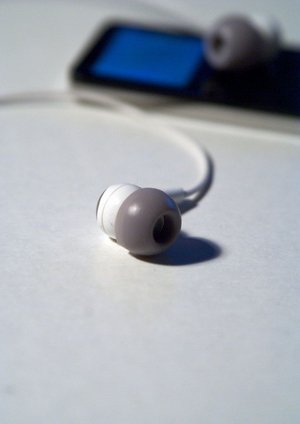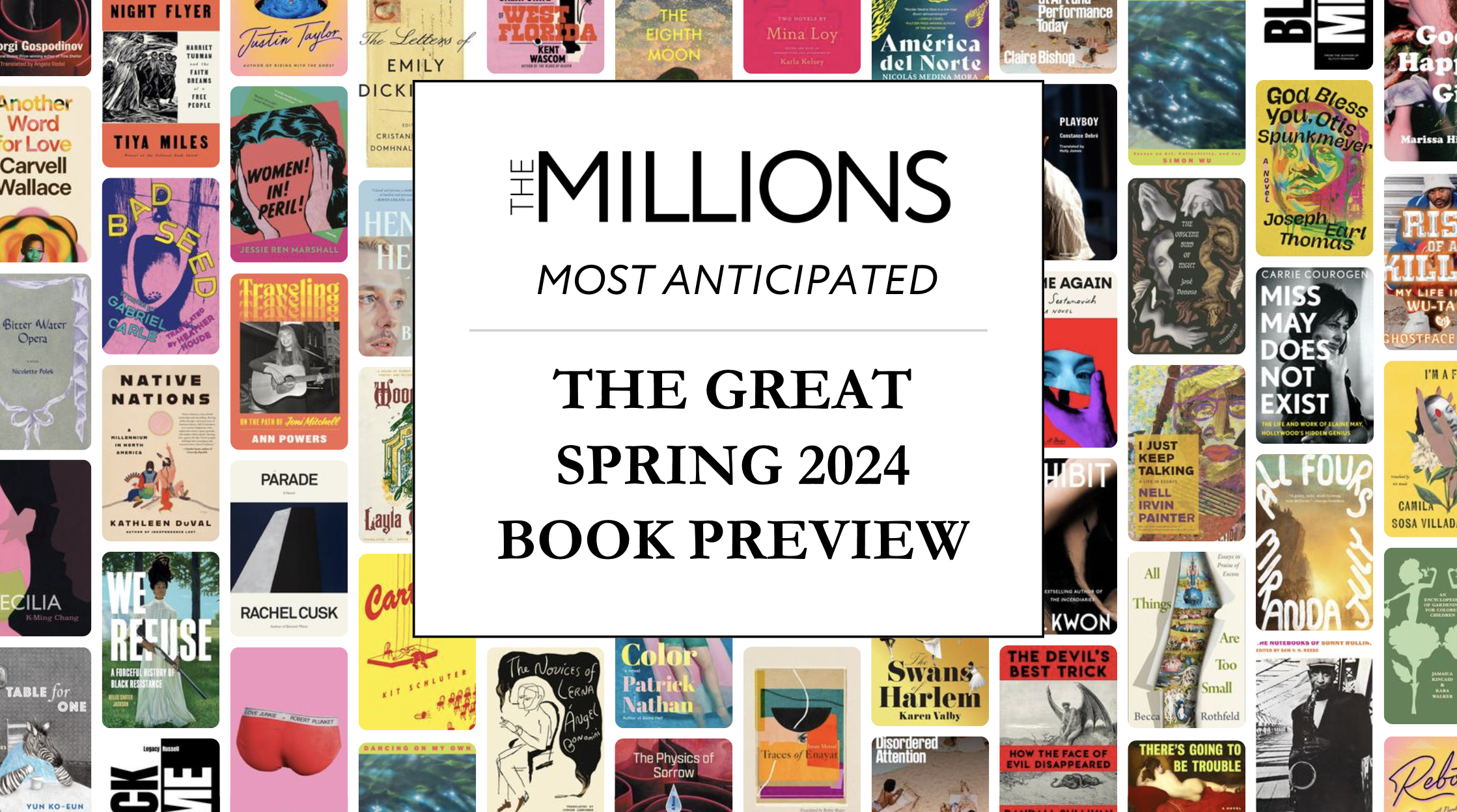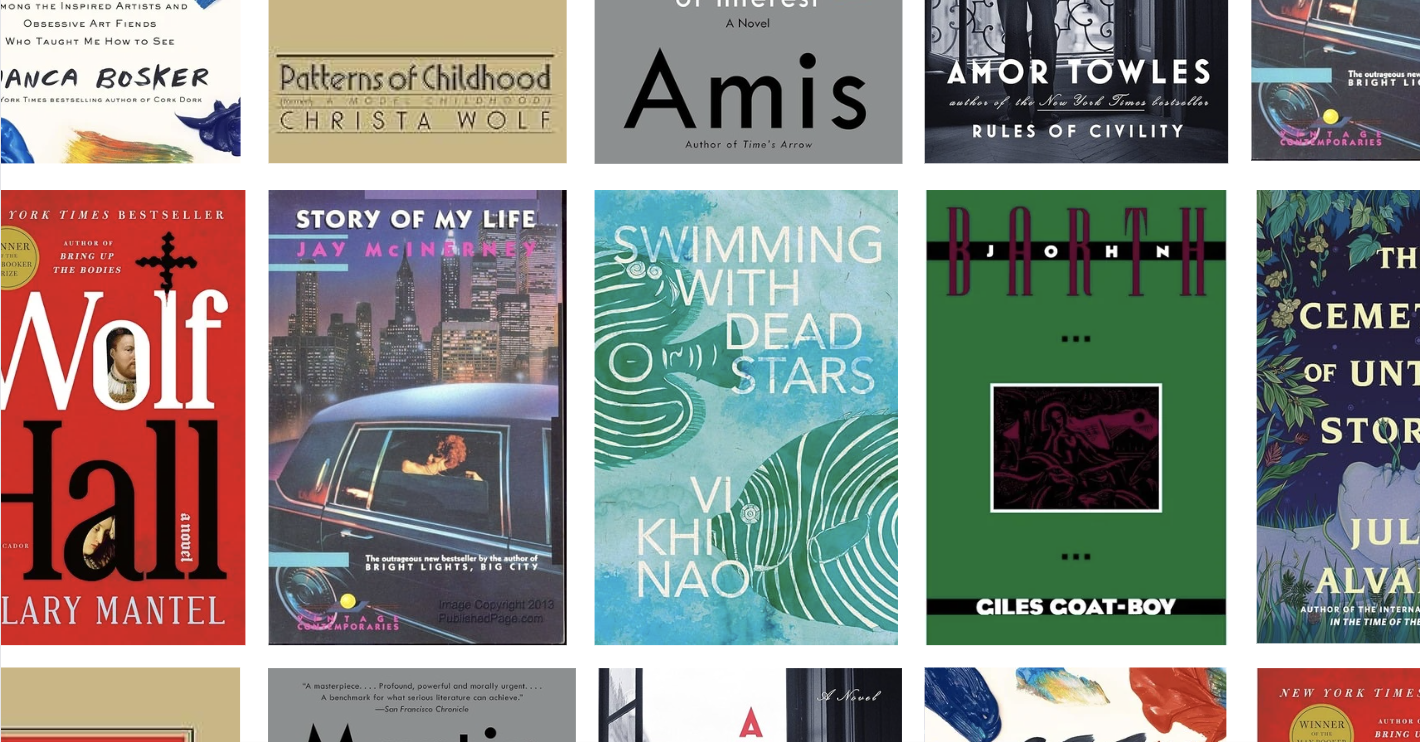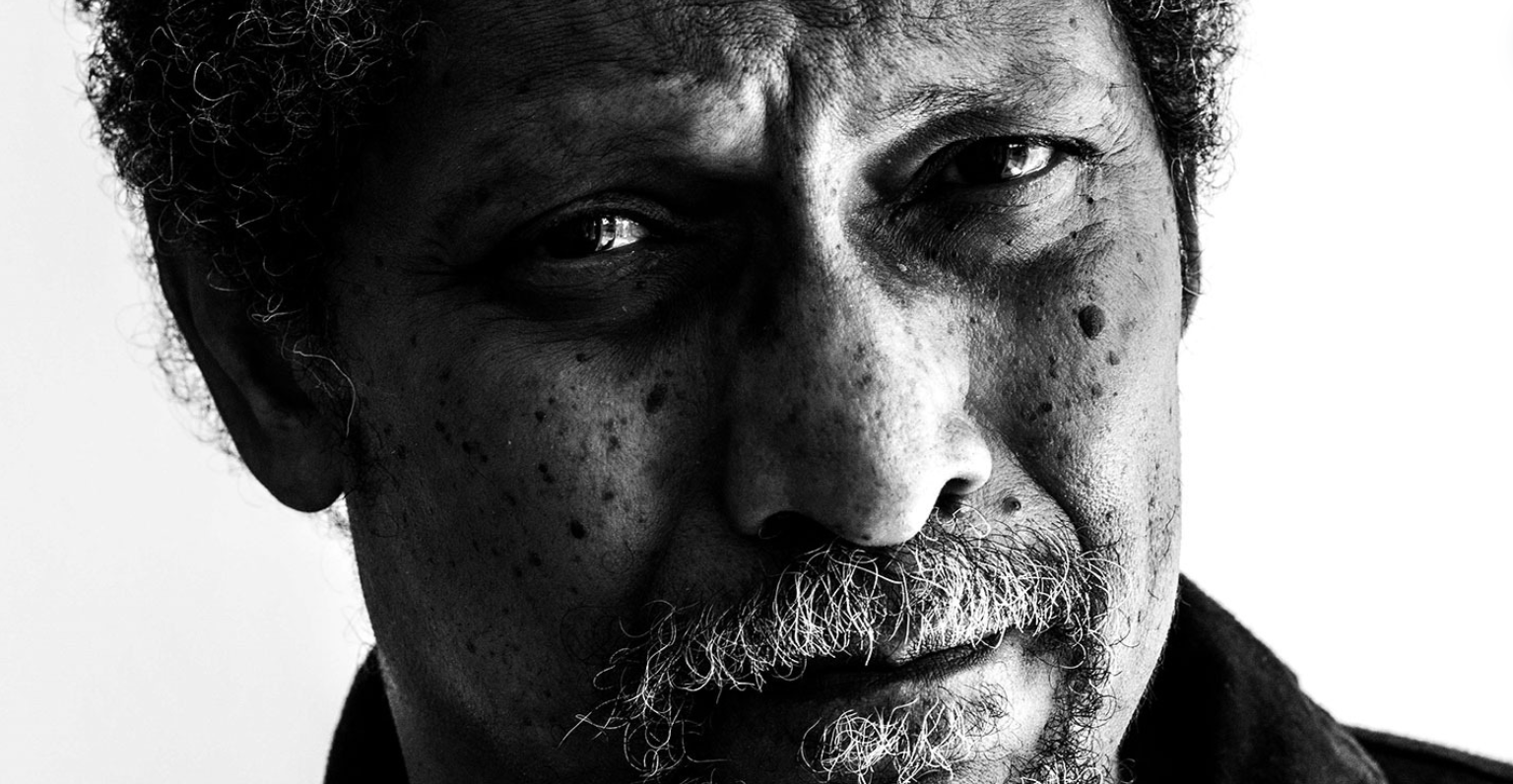 In March of this year, the writer Steve Almond penned a brief article in the LA Times waxing nostalgic about the 70s, when listening to music was an “activity in and of itself… and not just another channel on our ever-expanding dial of distractions.” Almond attributes this evolution of our listening habits to the usual suspects, namely technology and the devices and software that fall under the iPod/iTunes umbrella. Because music listening, says Almond, has become less a “concerted sonic and emotional event” and more a pragmatic function of our increasingly digital lifestyles, we as a music listening culture are missing out on opportunities for a sacred and spiritual interaction with our music. For sure, Mr. Almond is right to say that our relationship with music has been profoundly influenced by taking our music out of the living room, away from the stationary turntable and component stereo system, and inserting it into nearly every activity and event of our days. However, it’s grossly inaccurate to dismiss this impact as sacrilegious or impoverishing when what technology has in fact done for us as a music listening culture is quite positive, something close to liberating, and dangerously powerful.
In March of this year, the writer Steve Almond penned a brief article in the LA Times waxing nostalgic about the 70s, when listening to music was an “activity in and of itself… and not just another channel on our ever-expanding dial of distractions.” Almond attributes this evolution of our listening habits to the usual suspects, namely technology and the devices and software that fall under the iPod/iTunes umbrella. Because music listening, says Almond, has become less a “concerted sonic and emotional event” and more a pragmatic function of our increasingly digital lifestyles, we as a music listening culture are missing out on opportunities for a sacred and spiritual interaction with our music. For sure, Mr. Almond is right to say that our relationship with music has been profoundly influenced by taking our music out of the living room, away from the stationary turntable and component stereo system, and inserting it into nearly every activity and event of our days. However, it’s grossly inaccurate to dismiss this impact as sacrilegious or impoverishing when what technology has in fact done for us as a music listening culture is quite positive, something close to liberating, and dangerously powerful.
Track 01: “Take Pills” by Panda Bear
While the methods by which we now acquire our music have had an impact, to a degree, on our experience of music listening, they have remained markedly less influential than the evolutions in the design and application of what we use to listen to our music. In 2008 and 2009, close to 100 million iPods were purchased globally. The widespread use of personal mp3 players and, more importantly, the headphones attached to those players, have gone on to facilitate for a significant percentage of the population a kind of relationship that has never before occurred between music listener and music.
Join the public space and look around: It takes only a brief moment to locate an individual plugged in and headphoned up. Like using an umbrella, headphones serve a particular function, shielding us from the nuisances of the world. Hop on any form of public transportation, plug in, and no longer must you suffer the coughing, sneezing, dry throat clearing, cell phone texting, loud speaker announcing, sneaker squeaking, nervous leg tapping, neighbor yawning, Doritos eating, water bottle dropping and newspaper shuffling that is the shuttle, train, or bus around you. Step off and into the street and headphones continue to serve you well. Why subject yourself to the car honking, police whistle blowing and sidewalk chattering of the urban space when you don’t have to?
Track 02: “Sunshine and Clouds (and Everything Proud)” by Clap Your Hands Say Yeah
Headphones though have a function superior to being simply a buffer to keep out the annoyances of the modern world. They quickly and conveniently facilitate our music listening habit, an activity with a potent high. As the neurologist Oliver Sacks says of music, it can call to both parts of our basic nature—the emotional and intellectual. (Throw in physical satisfaction and music might be the perfect mate.) If you’re in search of a superficial engagement, you can find a basic emotional solace at the threshold of a song’s sound; take it in at its surface level and feel satisfied with the instrumental performance and/or the tonal qualities of the words sung or spoken. Listen deeper—to the song’s narrative, meaning, and themes—and you will locate the ideas and concepts that provide the intellectual stimulation Sacks speaks of. If you allow it, music can strike you in the heart as well as in the head. But any music fan knew this already.
Track 03: “We Will Never Die” by Bon Iver
The result of having taken this emotionally and intellectually stimulating habit on the road, away from the home stereo and into everywhere, is that we have become Hollywood directors soundtrack-editing in real time the films of our lives. Maybe we can’t chop out a tedious 45-minute bus commute from our day, but with the addition of our favorite albums or playlists we can certainly make it speak to us in powerful ways. With the right soundtrack, a movie director can heighten tension, add irony, or inject a scene with some deeper meaning. With our headphones on, we become directors who can enrich even the most boring activities of our lives with provoking music. Think, for example, of a hypothetical Charlie buying fruit in the produce aisle while he listens to Talking Heads “This Must Be The Place.”
He works through the bins of fruit, he’s squeezing oranges, and his mind wanders: I am buying these oranges, my fiancé will eat one while standing in our apartment kitchen, the apartment that we live in, the apartment that we call home, in the community that we call our own; a community with supermarkets like this one, with offices nearby, offices like mine, where I earn a salary that affords me things like an apartment and oranges and… With headphones on and the right song playing, Charlie’s banal produce experience becomes, depending on his receptivity to sentimental thoughts, a fertile stream of ideas and emotions about his concepts of home, family, and community. If present, willing, and plugged in, we like Charlie can influence the emotional and intellectual tenor of our public moments of solitude. We are no longer subject, for example, to the soul numbing commercial ambiance of a supermarket—of what Delillo described in White Noise as “toneless systems” and a “dull unlocatable roar.” Instead, we inject into our shopping experiences and mundane errands evocations of our strongest felt memories, relationships, and wants.
Track 04: “Pink Stones” by Memory Tapes
Headphones liberate us from being distracted by the thumping sonic assault of corporate businesses and the audio debris broadcast by others in the public space. (Both are on display in their worst ways at chain fitness gyms: The loudspeaker announcements for hybrid pilate-mixed martial arts-yoga-spin classes showering down over a roomful of grunting, heaving, chatting neighbors.) When we facilitate our liberation, wherever we are, we gain a particular brand of insight into ourselves. The French scholar Michel de Certeau observes a similar gain of perspicacity when we travel on a train. He proposes that when we are behind a train window and observe landscapes of almost blurry trees, buildings, and chunks of towns, we are seeing and moving through familiar things but yet remain totally separated from them. It’s a bit of a paradox—to be removed from something while being immersed in it at the same time—but this is a process we undertake more often than we think, especially when we use our memories. For example, when we think back and remember our high school graduation, we are not there anymore, in the stuffy summer auditorium or under the buggy football stadium lights, but our minds move us through the distant memories just as if we were. When we travel on a train, what’s far away seems strange in the same way as when we think of our high school friends at graduation, those odd and younger versions of the adults we might not now recognize, warped by the velocity of so many years. Likewise, from behind a train window, trees lose their leaf-edge detail, street lamps and parked cars appear as quickly as they vanish. And in this magician’s trick of speed and sleight of movement, fences, trees, and cars become shadow objects, provoking and echoing objects from our memories, dreams, and secrets. Moving quickly along the railway, always away from these shadow objects, we see briefly vague hints of what we normally furnish our mind with and this estrangement from our own internal mental horizon puts us into a meditative mood of speculative thinking. De Certeau cleverly terms this as “losing one’s footing” from the reality around us and something quite similar happens to us when we plug into our mp3 players and tune out.
Track 05: “Here Come De Honey Man” by Clark Terry
Headphones, like the train window, create a distance between us and that which is around us. The music in this case acts like the train itself, propelling us forward, moving us through that which we are no longer a part of. We walk along a crowded city sidewalk, participate in the dense humanity as it throbs up and down the street, but are oblivious to the sounds that populate such a scene because our ears are plugged up. It’s as if the train’s two-dimensional windowpane has gone 3-D, enveloping us in a glass box of music, a pope-mobile like protection from the audio infiltrations of the city space. The music, in this way, takes us somewhere else. We are relieved from our position as a member of the dense humanity and we are able to view it, and our place within it, from somewhere else. This death of the present moment is, as De Certeau says, “necessary for the birth, outside of these things but not without them, of unknown landscapes and the strange fables of our private stories.” We again become the movie directors of the films of our lives, except now we have a script: The New York city street we walk is reappropriated for our personal fantasies of narrative; the silent others around us become the film extras, the characters of our memories become the stars, and we, for once, get to say action and cut.
Track 06: “Building Steam with A Grain of Salt” by DJ Shadow
The ultimate effect of having quick and frequent access to private moments during which we can meditate on our memories and ideas—even while in the public space—is that we develop a better and richer understanding of ourselves (if we’re receptive to it). This occurs in large part because our memories and ideas undergo a modulation each time they are put to use. For example, when we read a headline about Michael Jackson dangling his baby over a railing, our ideas about a whole litany of things change. Our understanding about Father, Baby, Dangling, Child Care, Bizarre, Celebrity, Career Train Wreaks, and every other simple component of that story about MJ getting weird takes on a new shape. This is precisely what is going on when we’re listening attentively to emotionally and intellectually stimulating music. When we tune in, we call upon ideas and memories in our minds—let’s say three weeks ago via some song in particular, and then again a few days ago with that same song—and we gain a new perspective on whatever it is that song provokes within us. Why? Because we have a “then and now” to compare and contrast. Even if a song evokes a very particular memory, a tune that reminds us of a cruise ship vacation, for example, we will inevitably think of that vacation differently if only in the slightest way when viewed through the music-filtered perspective of three weeks ago versus a few days ago. Because we can never be in precisely the same mindset at two different times—there are always subtle if not significant differences in what is floating around in our heads at any given moment—we gain two different points of view on the memory of that cruise ship vacation, just like how we had a before and after perspective on the idea of Celebrity Children before and after reading about Michael Jackson and the baby. Music, in this way, serves us like a personalized Lucky Google search of our internal inventories, digging up rare or popular gems from the archives of our lives. By creating moments pregnant for improving our understanding of ourselves, we essentially gain an opportunity for a better understanding of the world as well.
Track 07: “Anywhere Anyone” by Dntel
Up to this point, my focus has been on the advances in technology that have afforded us the ability to bring our music with us wherever we can carry along our phones or mp3 players. It’s important to note though that there’s another kind of technological portability that has been almost as influential on our music listening habits: Playlists. In the move away from artist and label determined track sequences towards complete user control, the modern music listener has taken over as the primary music curator, able to move songs around at will. The tracks I used to title these sections, for example, were plucked from a playlist of songs I can write to (playlist title: “Songs w/ Little Words”). Most of these tracks are from albums I enjoy immensely in their originally intended track sequences. However, I have also found value in re-contextualizing these songs into new arrangements with other selections of my choice.
10 years ago, this sort of playlist creation was clumsy and slow, requiring cassette tapes or the still emerging mix CDs and burn software. Because of torrent sites, high speed internet, and the mp3’s victory as the format of choice, mp3 player technology has had to keep pace; now, nearly anyone can become a music curator, selecting tracks from various artists, genres, and time periods to create playlists and portable music libraries that are unique and incredibly personal. In taking charge of the order in which we arrange our music, we develop a more vested interest in our music. Like a renter who becomes a home owner, we care about the small details: the opening song as a first impression, the transition between tracks, the playlist title that probably no one else cares about. We become not just curators of music but curators of connections, evaluating not simply songs or albums on their own terms but also how albums and songs relate to one another. In making playlists, we come to understand our music in a more sophisticated way.
With so many options for control and power over our music, we run the risk of falling prey to a fantasy of what Baudrillard calls “potentialitites linked to usage.” Instead of employing our music and mp3 players as conduits to our “psychological” sanctuaries, we fascinate ourselves with the mechanics of music curating. Baurillard was originally speaking about cars but his ideas are also applicable to our relationship with current music technology. It is here that Steve Almond’s concerns about the impoverishment of our listening habits have the potential for genuine applicability. If we allow ourselves to become less concerned with an emotional and intellectual engagement to our music and more occupied with the “mastery, control, and command, an optimalization of the play of possibilities” offered by the music technology we tether ourselves to on a daily basis, then we will have lost out on having any sort of deep connection with the music itself.
The potential for missed connections multiply as the technology becomes more advanced and the appeal of mastering such sophistication looms over us. “Each person,” Baudrillard points out, “could see himself at the control of a hypothetical machine” capable of launching himself like an astronaut into mental space, far from his place of origin. We’re quite familiar with these space cadets. They are the members of the global Audio Visual club: TechoNauts who camp out in front of Apple Stores for days and nights, awaiting the next generation iPhone. Products of their environment and causalities of our upgrade culture, TecnhoNauts monitor the controls of their technology with such vigor that they find themselves separated from the world around them, divided from the public space by nearly becoming the interface of their preferred gadgetry. Their speaker wire costs as much as a new set of tires; their digital music files are nearly perfect copies of the master pressings; they are perpetually in search of purity. Instead of looking through the prism of music into the interior landscape of their memories and minds, TechnoNauts look only at the potential of the prism. From their perspective, it is less important to have a song to turn to when feeling down than being able to have access to that song, with the best equipment possible, in every scenario imaginable.
Track 09: “Collapsing At Your Doorstep” by Air France
If religion is the smooth opiate for the masses, then music is our pharmaceutical grade stimulant. Wittgenstein argues that language itself can never illustrate the essence of meaning, it can only point towards it. Music, here, achieves language’s grand project: To show and not tell what being a human being is all about. Music provokes and informs our thoughts without ever taking their form. Music can, in its own unique way, evoke emotion and challenge ideas burrowed deep in the seas of our minds. We have technology that makes this excavation of our inner landscapes easier than it once was. The potential for abusing this technology is great, but so is the payoff for using it right. As Schopenhauer says, music has the high value of being the panacea of all our sorrows. Never is music best used as a sedative—it performs at the highest level when it offers us insight, stimulating and shaking up our inner beings so that we can better understand each other.
[Image credit: p_a_h]









